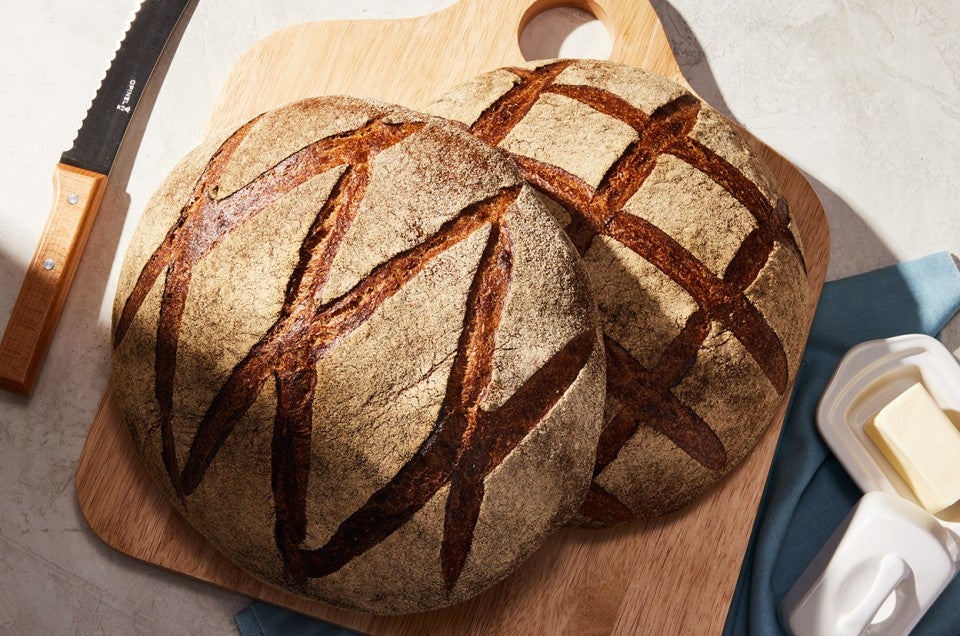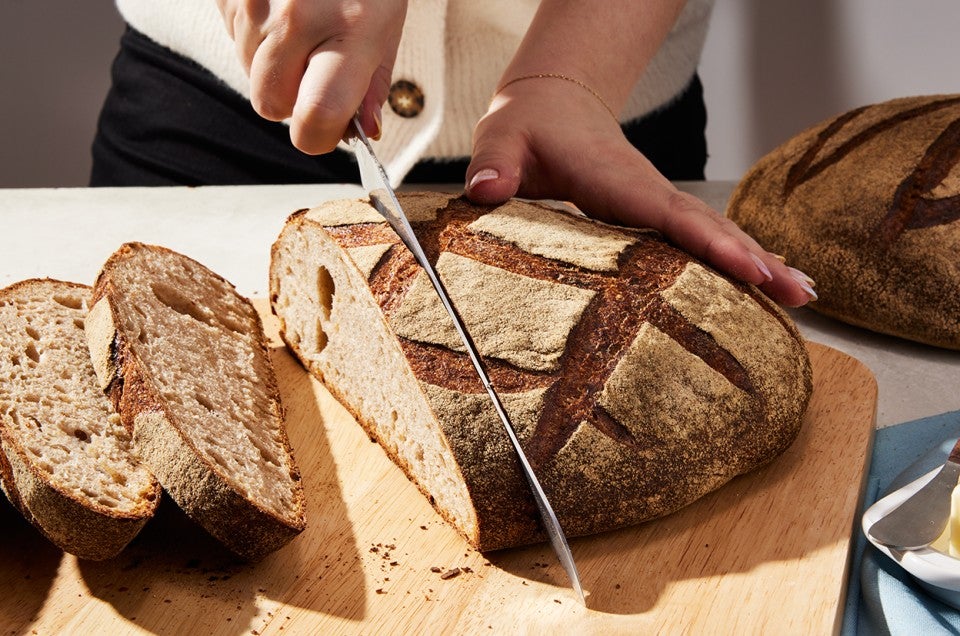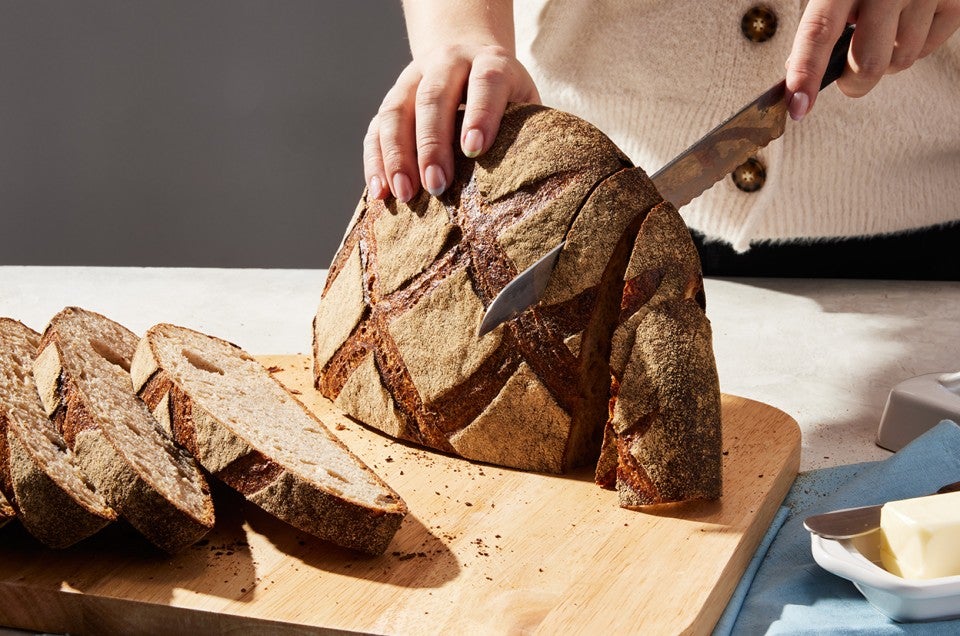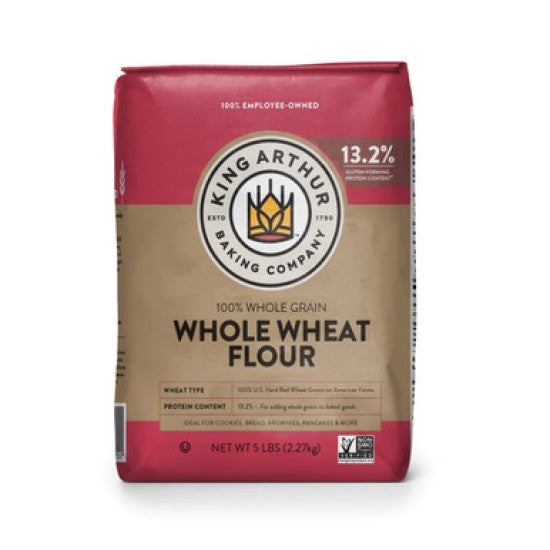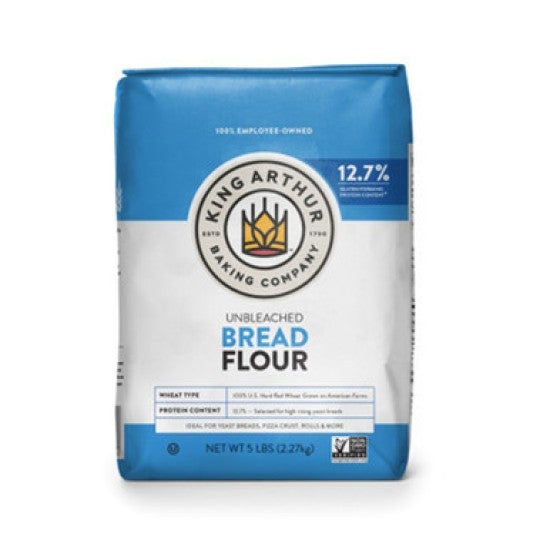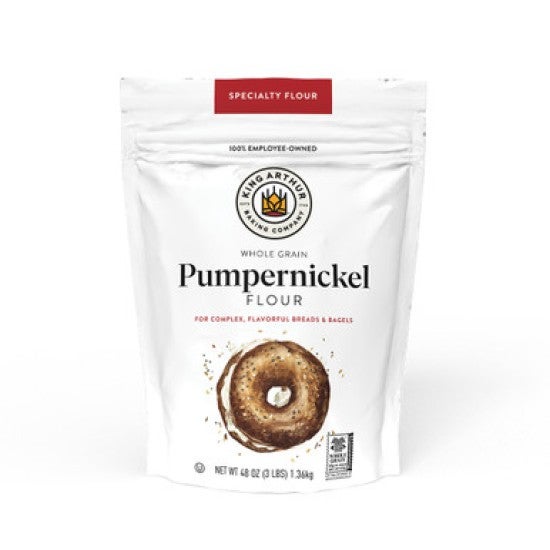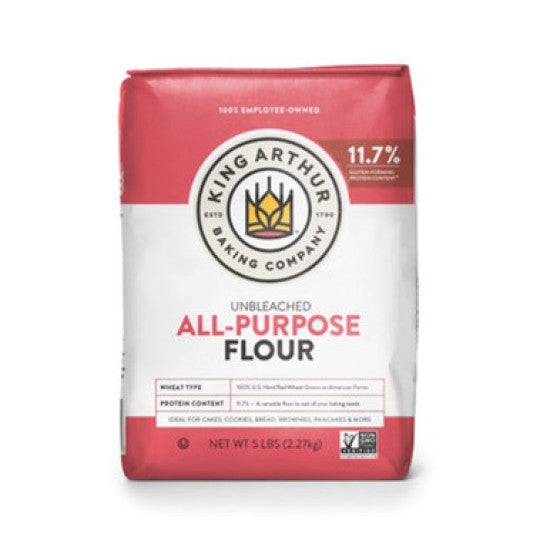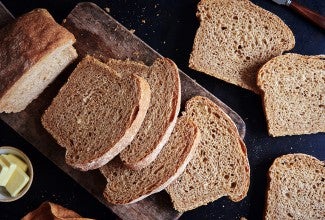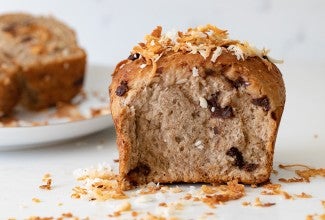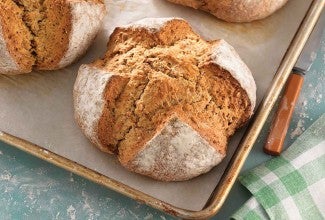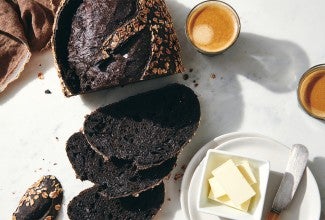-
To make the preferment: Weigh your flour; or measure it by gently spooning it into a cup, then sweeping off any excess. (To measure by volume, see "tips," below.)
-
In a medium bowl, mix together all the preferment ingredients. Cover the bowl and set it aside to rest at room temperature for 12 to 18 hours; overnight works well.
-
To make the dough: In the bowl of a stand mixer fitted with a dough hook, add the water, then the flours, and mix until thoroughly combined and homogeneous, about 4 minutes on low speed. Scrape down the sides of the bowl then add the preferment, salt, and honey to the top of the dough but do not stir to combine. Cover the bowl and set the mixture aside to rest for 2 to 4 hours. This rest is known as “autolyse,” and it helps give the dough strength and reduces the number of folds that need to be done later.
-
After the autolyse, turn on the mixer to medium low and mix until the preferment, salt, and honey are fully distributed, 2 to 3 minutes. Then increase the speed to medium, mixing until the dough cleans the bowl and smooths out, about 4 minutes.
-
After mixing, transfer the dough to a greased 2-quart standard dough-rising bucket, fold the dough over onto itself a few times to make it into a tidy round, and place it in a warm spot to rise for 1 hour.
-
To do a bowl fold: Use your wet hand to grab a section of dough from one side, lift it up, then press it down firmly into the middle. Repeat 8 to 12 times, working your way around the dough in a circle.
-
Cover the container and set it aside to rise until it's grown 1.5 times (it should reach the lid of the 2-quart standard dough-rising bucket), about 1 1/2 to 2 hours.
-
To shape the dough: Transfer the dough to a well-floured surface. Grab a section of dough from one side, stretch it away from the center, and then press it into the middle to seal. Continue this stretch-and-press motion, working around the dough twice, for a total of 15 to 20 stretches.
-
Line a 9" pie pan or medium skillet with a brotform liner or clean apron and dust it well with whole wheat flour. Place the taught round seam-side up into the prepared pan to complete its final proof.
-
Let the shaped loaf rise, covered, for 1 to 1 1/2 hours.
-
While the bread is resting, preheat the oven to 475°F with a baking stone or steel placed on a middle rack. Allow the oven to preheat for about 1 hour to ensure it is thoroughly heated. Near the end of this hour, place an empty cast iron skillet on the oven rack below the stone or steel, which will be used to create steam during the bake. If possible, adjust the stone and pan so that the skillet isn’t directly under the stone, making it easier for steam to reach the baking bread.
-
When the bread is proofed and feels light, almost marshmallow-y, and a small impression remains when pressed with a finger, invert it onto a sheet of parchment and allow it to rest for 15 minutes.
-
Use a baker’s lame or razor blade to score the loaf in the pattern of your choice.
-
To bake the bread: Place the loaf in the oven on the stone or steel and pour about 1 cup of warm water into the skillet. Steam will billow from the pan upward to envelop the bread; be sure to wear good oven mitts to shield your hands and arms. Quickly close the oven door to trap the steam.
-
Immediately lower the oven to 450°F and bake until the loaf is a deep golden to dark brown in color, about 45 minutes.
-
Turn off the oven and allow the bread to rest in the oven for an additional 10 to 15 minutes, monitoring it so that it takes on as much additional color as you like.
-
Remove the bread from the oven. Cool fully before slicing.
-
Storage information: Wrap the bread loosely and store it at room temperature for up to several days; freeze for longer storage.
